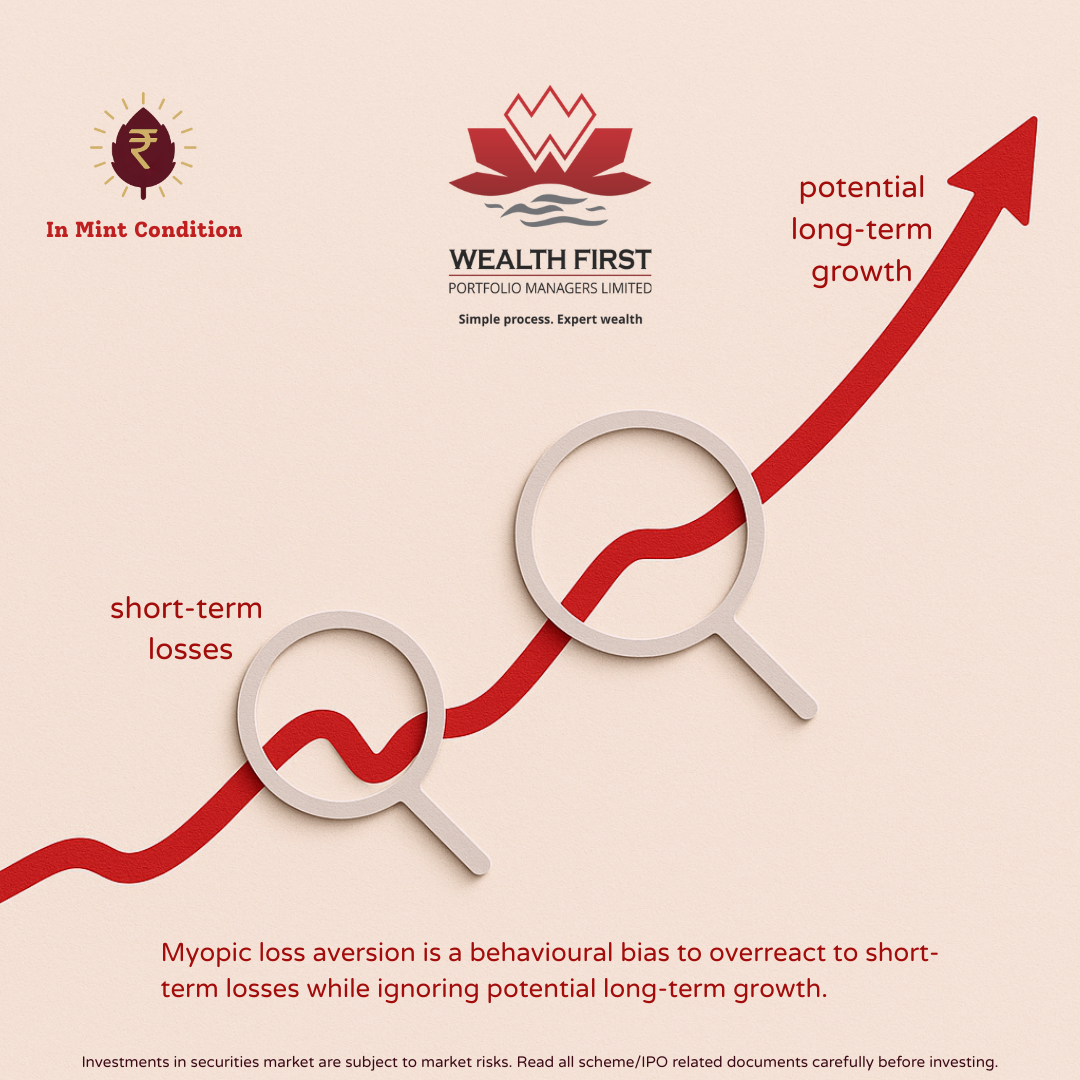

We are starting a new series: In Mint Condition — fresh takes on timeless wealth wisdom. This series is about short, story-led pieces that try to make sense of often less-talked aspects of Investments such as behaviour, psychology, perception, emotions and more. This is an attempt to put together simple principles, thoughtful analogies, and small habits that have stood the test of time. We hope you enjoy reading as much as we enjoyed creating it!
Every few months, the display would change outside Aarohi’s favourite design studio. New fabrics, new colours, new cuts. Each seemed like the missing piece she had been waiting for to add to her wardrobe. She never intended to buy something every time, but she often did. The excitement of the new always seemed to outweigh the comfort of the familiar.
Soon, her wardrobe overflowed with clothes that once thrilled her, now resting untouched. It wasn’t that her taste changed, but her attention certainly did.
The faster the things moved, the shorter her satisfaction lasted. One day, as she stood before the mirror, she realised she wasn’t dressing for herself anymore. She was dressing for the trending moment.
Understanding the Idea
This everyday story of shifting choices mirrors a deeper truth about how we perceive gain, loss, and time; something psychologists and economists began studying over four decades ago. To understand it, let’s break down the three words behind the behavioural concept known as myopic loss aversion:
- Myopia: It literally means “short-sightedness.” In behavioural terms, it’s the tendency to focus on immediate outcomes rather than long-term ones.
- Loss: It represents any perceived decline in value—financial, emotional, or otherwise.
- Aversion: It is that instinct to avoid discomfort or pain, even if it means giving up potential future benefits.
Put together, myopic loss aversion is a behavioural bias to overreact to short-term losses while ignoring potential long-term growth. It explains why people may feel anxious during market dips or why frequent checking of investments amplifies stress.
Economists Richard Thaler and Shlomo Benartzi first articulated this idea in the 1990s through what became known as the “Myopic Loss Aversion Theory”.1 They found that investors who reviewed their portfolios frequently made more short-term decisions, often leading to worse long-term outcomes.
Why? Because they saw more losses. The shorter the time window you observe, the higher the chance of encountering a temporary dip, and the more emotionally painful it feels. Our brains interpret those dips as danger, triggering a “protect now, regret later” response. Data from behavioural studies consistently confirm this:
- People checking portfolios daily perceive more negative days than those who check quarterly.2
- Investors who trade based on fear or trend tend to underperform the very funds they invest in by 1–2% annually.3
In short, the human mind isn’t wired for constant observation. It’s wired for meaning.
And meaning reveals itself only over considerable period of time.
Months later, the design studio updated its display again—this time, quiet earth tones replaced the bright trends. Aarohi paused, smiled, and kept walking.
She had learnt something her wardrobe couldn’t teach but her patience did;
not everything new deserves your attention. Some things gain value only when left untouched. In her closet—and in her investments—she had found peace in not reacting to every shimmer of change.
Key Takeaways
- Short-term focus magnifies pain: The closer you look, the more temporary losses appear permanent.
- Losses feel heavier than gains: Emotional reactions distort rational judgment.
- Patience reveals true progress: Step back, and the bigger picture starts to make sense.
Read Next
- Wealth First Explains: The Power of Compounding & Starting Early
- Wealth First Explains: Volatility: Riding the Waves with Confidence Amid Uncertainties
Disclaimer: The content shared by Wealth First is for general informational and educational purposes only and should not be considered as investment advice, research, or a solicitation to buy or sell any financial product. Past performance is not indicative of future results. All investments are subject to market risks, including possible loss of principal. Readers should consult their financial, legal, or tax advisors before making any investment decisions tailored to their personal circumstances. While utmost care is taken to ensure accuracy of information and concepts, Wealth First does not guarantee completeness, reliability, or timeliness, and shall not be liable for any direct or indirect loss arising from reliance on such information. All articles contain no offer, inducement, or solicitation for account opening, investment, or trading activity. All characters and examples are fictional and used only for illustrative storytelling. Wealth First, its employees, and affiliates expressly disclaim any liability arising from interpretation or use of this material.
1 https://www.anderson.ucla.edu/documents/areas/fac/accounting/myopic_loss_aversion.pdf
2 https://www.cnbc.com/select/how-often-should-you-check-your-investment-portfolio/
3 https://www.morningstar.com/financial-advisors/these-bad-habits-hold-investors-back-peak-performance
